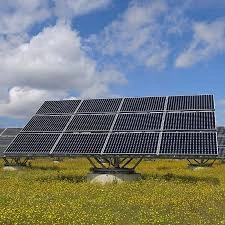Advancements in Bifacial Solar Cell Technology for Enhanced Energy Production and Sustainability Solutions
The Rise of Bifacial Solar Cells A Revolution in Solar Technology
In recent years, the solar energy industry has witnessed significant advancements aimed at enhancing efficiency and sustainability. One of the most promising developments has been the emergence of bifacial solar cells, which represent a revolutionary step forward in solar technology. Unlike traditional monofacial solar panels, bifacial solar cells are designed to absorb sunlight from both sides, effectively doubling their energy production potential under optimal conditions.
Understanding Bifacial Solar Cells
Bifacial solar cells utilize a transparent back side, allowing sunlight to be captured from both the front and rear of the panel. This innovative design leverages reflected sunlight, known as albedo, from the ground or surrounding surfaces, which can significantly increase the amount of energy generated. Depending on various factors such as installation angle, terrain, and surface type, bifacial solar panels can achieve a gain of 10% to 30% more energy compared to their monofacial counterparts.
Advantages of Bifacial Technology
One of the primary advantages of bifacial solar cells is their improved efficiency. As energy demand continues to rise globally, maximizing the energy yield from solar installations is crucial. The dual-sided nature of bifacial panels allows for greater capture of available sunlight throughout the day, particularly in environments that favor high albedo, like snowy or sandy areas where reflective sunlight is abundant.
Moreover, bifacial solar panels tend to have longer lifespans and better durability than traditional panels. The absence of a glass back can reduce the likelihood of damage from moisture and environmental stressors. This durability translates into lower maintenance costs and greater long-term reliability, making bifacial technology an appealing investment for solar developers.
Economic Impact
bifacial solar cells

The rising popularity of bifacial solar cells also has significant economic implications. As the technology becomes more widespread, costs associated with production are expected to decrease, making it a more accessible option for both residential and commercial users. With global governments pushing for renewable energy adoption to combat climate change, bifacial solar panels offer an efficient and sustainable solution.
Beyond the initial investment, the lifecycle cost reductions associated with bifacial installations could lead to lower energy prices for consumers. By producing more energy with fewer panels, leveraging both sides can also lead to reduced land use, allowing for more efficient solar farm designs.
Challenges and Considerations
Despite their advantages, bifacial solar cells do come with some challenges. The installation process can be more intricate, requiring specialized mounting systems to ensure optimal performance from both sides of the panel. Additionally, not all sites are suitable for bifacial technology; deployment in areas with low albedo or uneven terrain may not yield the expected benefits.
Furthermore, achieving accurate performance predictions can be challenging, as many factors influence the overall energy output. As such, thorough site assessments and detailed planning are essential for successful bifacial solar projects.
Conclusion
As the world shifts towards renewable energy solutions, bifacial solar cells stand out as a pivotal innovation in the solar industry. With their ability to harness more sunlight efficiently and sustainably, they represent not only a technological advancement but also a potential catalyst for widespread adoption of solar energy. As challenges are addressed and technology continues to evolve, bifacial solar cells may play a central role in shaping the future of energy production, contributing significantly to a greener and more sustainable world. As countries strive for energy independence and carbon neutrality, innovations like bifacial solar technology will be key to meeting these ambitious goals.
-
Unlocking Energy Freedom with the Off Grid Solar InverterNewsJun.06,2025
-
Unlock More Solar Power with a High-Efficiency Bifacial Solar PanelNewsJun.06,2025
-
Power Your Future with High-Efficiency Monocrystalline Solar PanelsNewsJun.06,2025
-
Next-Gen Solar Power Starts with Micro Solar InvertersNewsJun.06,2025
-
Harnessing Peak Efficiency with the On Grid Solar InverterNewsJun.06,2025
-
Discover Unmatched Efficiency with the Latest String Solar InverterNewsJun.06,2025







